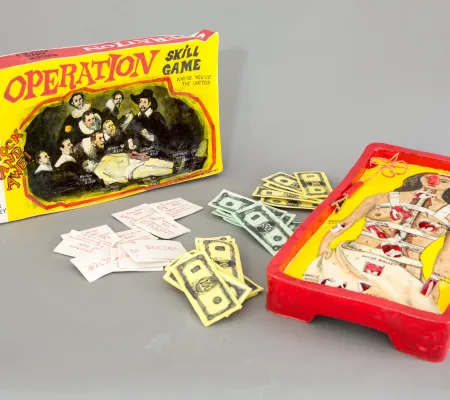Alumna Rowena Dasch (MA, 2001; Ph.D. in Art History, 2012) has served as the Director of the Neill-Cochran House Museum (NCHM) since 2013, overseeing its continued evolution as an organization committed to connecting Austin’s past to a collective experience of the present. This spring, it presents the exhibition If These Walls Could Talk, placing ceramicist Ginger Geyer’s modern porcelain sculpture into the historic spaces of the museum.
“Geyer in collaboration with actor Jennifer Cumberbatch will use the artwork as a launch pad for a series of conversations between two adolescent girls, Chlora and Ruby Virginia,” said Dasch. “The two girls, one white and one black, will highlight similarities and dissonances between past and present, high art and material culture, and experiences and treatment one would have received in a home like the NCHM Greek Revival-style mansion depending on race, class, gender and socio-economic status through time.”
Formerly a museum professional at the Dallas Museum of Art and Kimbell Art Museums, Geyer’s trompe l’oeil sculpture combines references to art history, spirituality and culture. If These Walls Could Talk is the largest retrospective of her work to date and the first to be situated within an immersive experience of a historic house and its slave dependency. Her collaborator, Cumberbatch, created the character of Ruby Virginia for the NCHM exhibition as the counterpart to Geyer’s fictional alter ego, Chlora, who has been a central figure within a majority of Geyer’s oeuvre. Actress and playwright Cumberbatch lends her passion for telling the stories of Black people “and all peoples with authenticity and depth in the context of the American landscape” to the dialogue between Chlora and Ruby, offering opportunities to explore issues of race and equity in the past and present. Cumberbatch also will perform a series of one-woman shows inspired by Geyer’s artwork during the run of the exhibition. The house and dependency, the third collaborator and character, reveals its history through Chlora and Ruby’s exchange.
“With the ongoing debates over Austin’s development code and how rapidly the city is expanding, it’s astounding to still find people who have never heard of Austin’s 1928 master plan, which forced people of color east of I-35 or what was then East Avenue,” said Dasch. “It’s important that sites like this remain because there is so little remaining of what was historic Austin. We are only about 100 yards away from a Freedman settlement and there’s only one building still standing. By being here, by visiting a slave quarters on this site, you can understand in a different way how Austin got to be what it is today.”
If These Walls Could Talk is just an initial venture into new territory for the Neill-Cochran House Museum, whose staff and Dasch are working in conjunction with a team from The University of Texas at Austin to retell, reinstall and reopen the dependency structure with a more complete sense of its history within Austin. Dasch reached out to School of Architecture Lecturer Tara Dudley and History Professor Daina Ramey Berry to help navigate the research necessary to accurately reinstall the slave quarter space, rethink how the NCHM’s tells its own history, and authentically tell the stories of the people who served at NCHM, both enslaved and free. “This show and the issues that it raises will be carried forward, ultimately, to a reopening in Spring 2021,” said Dasch.
For now, be sure to visit the exhibition If These Walls Could Talk or attend any of its many programed events from January 15 – May 3, 2020. Read an early review from KUT, Austin's NPR station.


